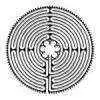-
Welcome to Celiac.com!
You have found your celiac tribe! Join us and ask questions in our forum, share your story, and connect with others.
-
Celiac.com Sponsor (A1):
Celiac.com Sponsor (A1-M):
-
Get Celiac.com Updates:Support Our Content
Test Results.
-
Get Celiac.com Updates:Support Celiac.com:
-
Celiac.com Sponsor (A17):
Celiac.com Sponsor (A17):
Celiac.com Sponsors (A17-M):
-
Recent Activity
-
- Scott Adams replied to AnnK73's topic in Gluten-Free Foods, Products, Shopping & Medications29
Celiac getting dentures
Welcome @Martha Mitchell, I too would like to know more about your prior lenses, and especially about the potential of gluten in lenses. In theory this should not harm most celiacs, as the autoimmune reaction normally begins in the gut, however, in those who are super sensitive or have dermatitis herpetiformis it may be a potential issue. -
- Scott Adams replied to JoJo0611's topic in Celiac Disease Pre-Diagnosis, Testing & Symptoms5
Chances of being coeliac
It's most likely going to be a celiac disease diagnosis based on your blood test results, but wait for your doctor to give you a green light for going gluten-free, as they may want to do additional testing. This article has some detailed information on how to be 100% gluten-free, so it may be helpful (be sure to also read the comments section.): -
- Wheatwacked replied to JoJo0611's topic in Celiac Disease Pre-Diagnosis, Testing & Symptoms5
Chances of being coeliac
Welcome @JoJo0611. That is a valid question. Unfortunately the short answer is slim to none. Be proactive, when the diagnosis process is completed, start GFD. Remember also that the western diet is deficient in many nutrients that governments require fortification. Read the side of a breakfast cereal box. Anti-tTG antibodies has superseded... -
- captaincrab55 replied to AnnK73's topic in Gluten-Free Foods, Products, Shopping & Medications29
Celiac getting dentures
Can you please share your research about MMA acrylic containing gluten? I comin up blank about it containing gluten. Thanks in Advance, Tom
-




Recommended Posts
Archived
This topic is now archived and is closed to further replies.